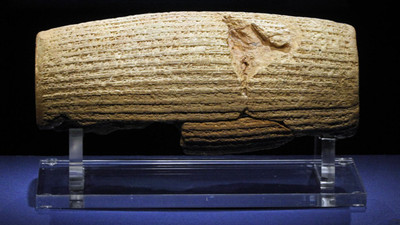The Cyrus cylinder

Xenophon, a Greek historian whose “Cyropaedia” has been read by statesmen down the ages, believed that Cyrus embodied all the qualities of a perfect king. Now the British Museum (BM) is sending an object closely associated with Cyrus on a tour of five American museums, beginning with the Smithsonian in Washington, DC. The curators hope the show will highlight the Persian king's religious tolerance and his close relations with the Jews in particular, and that this may help improve ties between America and Iran.











